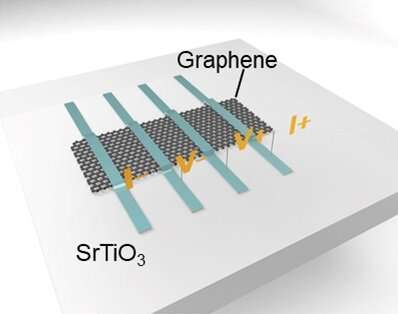Scientists are working on new materials to create
neuromorphic computers with a design based on the human brain. A
crucial component is a memristive device, the resistance of which
depends on the history of the device—just as the response of
neurons depends on previous input. Materials scientists from the
University of Groningen analyzed the behavior of strontium titanium
oxide, a platform material for memristor research and used the 2-D
material graphene to probe it. On 11 November 2020, the results
were published in the journal ACS Applied Materials and
Interfaces.
New insights into memristive devices by combining incipient
ferroelectrics and graphene



